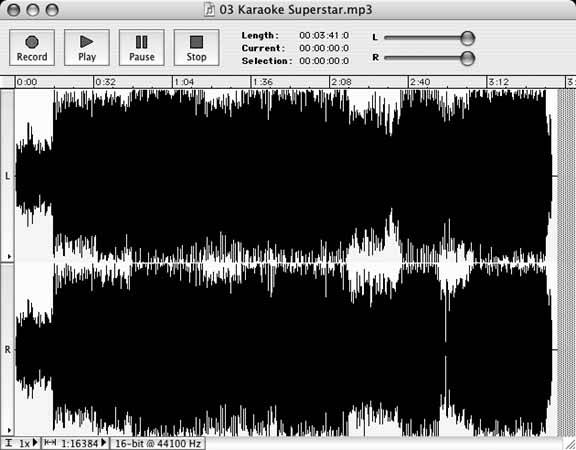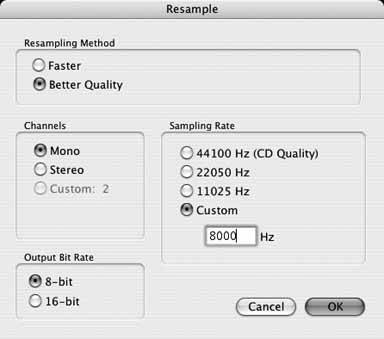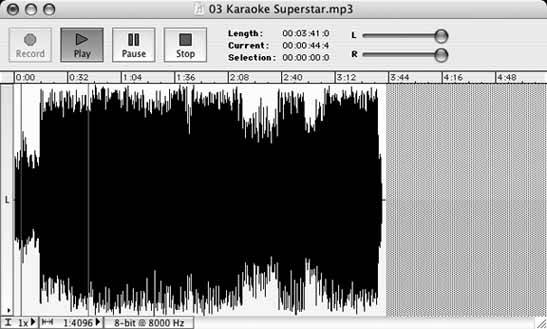Hack22.Telephonize a Sound File
Hack 22. Telephonize a Sound File
This trick is useful for taking on-hold music for a test drive, or just for making recordings sound like they're coming through a telephone. Whenever you work with telephony, be it desktop telephony apps or full-fledged IP phone systems, you're bound to encounter prerecorded sounds; things like on-hold messages, voicemail greetings, and even elevator music are often generated by computerized telephony applications. You might even need to create sounds that can be used with these apps. Generating your own telephony-ready sounds is a snap using desktop recording software. You can even resample your recordings so that you'll know exactly how they'll sound in a VoIP environment. This way, you can "preview" them. Sound-effects producers who need to make somebody's voice sound as though it's being heard through a telephone employ a technique called downsampling. This gives recordings that tinny telephone flavor. For a perfect phone-sound simulation, you'd also need to chop the high and low frequencies of the sound using an equalizer tool, but downsampling alone produces a pretty convincing "phone sound." Here's how it's done. The easiest way to downsample a sound is by using a simple sound editing tool such as Richard Bannister's Cacophony for Mac OS X, or Windows Sound Recorder, which comes with Windows. In essence, you open the sound file, change its sampling resolution to 8 bits per sample and 8,000 samples per second, and then save the file. (On a standard telephone call, there are 8 bits per sample and 8,000 samples per second in the media stream.) This matches your prerecorded sound to the sampling resolution of a typical phone call. In Figure 2-12, an MP3 sound file has been opened in Cacophony. Its left and right waveforms are displayed, since it's a stereo sound. Figure 2-12. An MP3 file opened in Cacophonyready to "telephonize" Clicking Cacophony's Resample function displays the Resample dialog, which lets you specify the exact factors you'll use to downsample the sound. All telephony applications are mono, not stereo. All legacy telephone equipment (and most VoIP equipment, too) uses a sampling resolution of 8 bits and 8,000 Hz, as shown in Figure 2-13. Once these settings are made, clicking OK dismisses the Resample dialog and performs the downsampling on the sound file. In Figure 2-14, the resulting sound waveform is telephonized. Listen to it now and hear the difference. It sounds much flatter, less crisp, and possibly more robotic. It sounds like you're hearing it through a telephone, which is the idea here.
Figure 2-13. Cacophony's Resample function lets you downsample sounds from hi-fi to "tele-fi" Figure 2-14. The resulting waveform is a mono, low-fi sound |
EAN: 2147483647
Pages: 156
